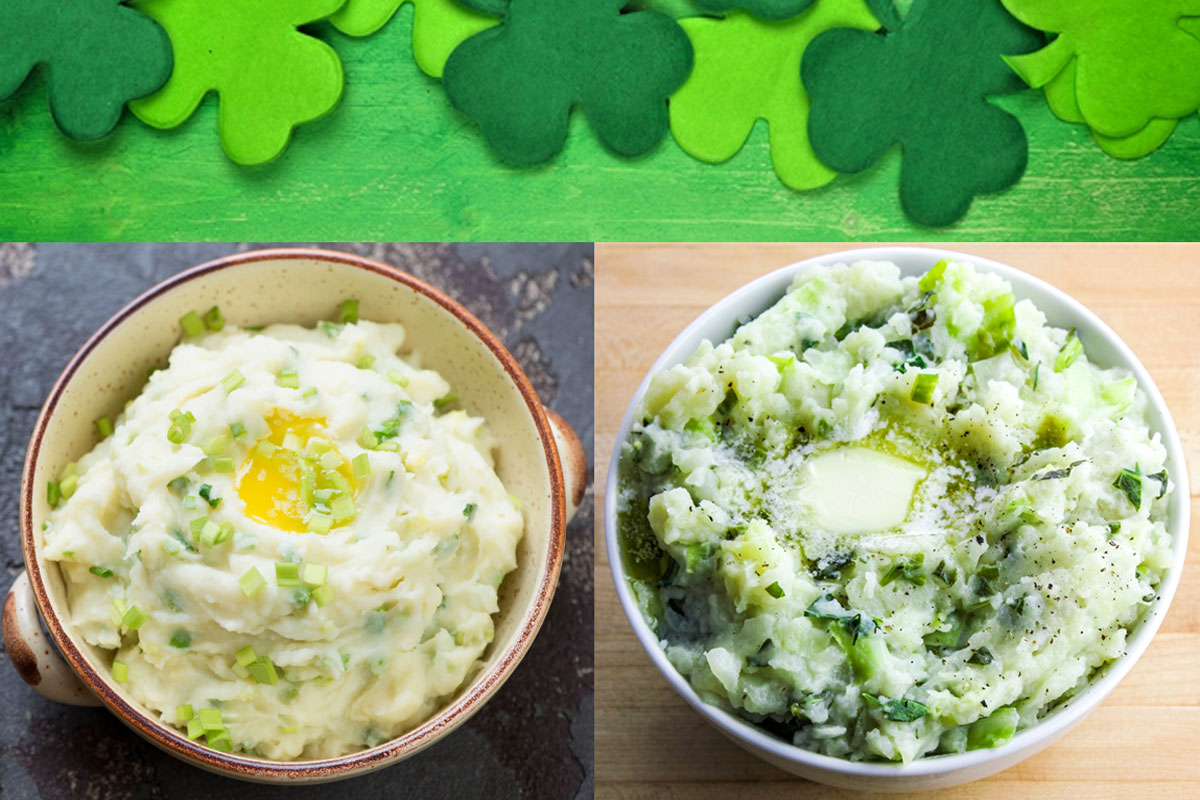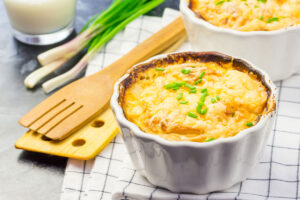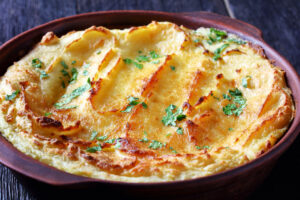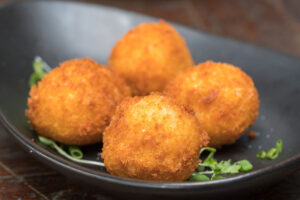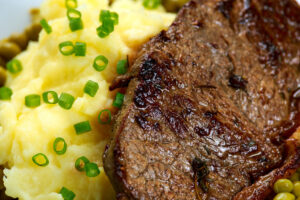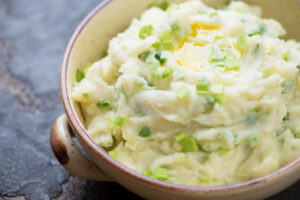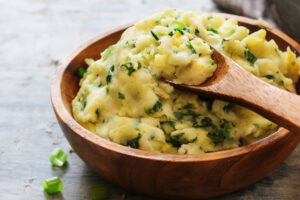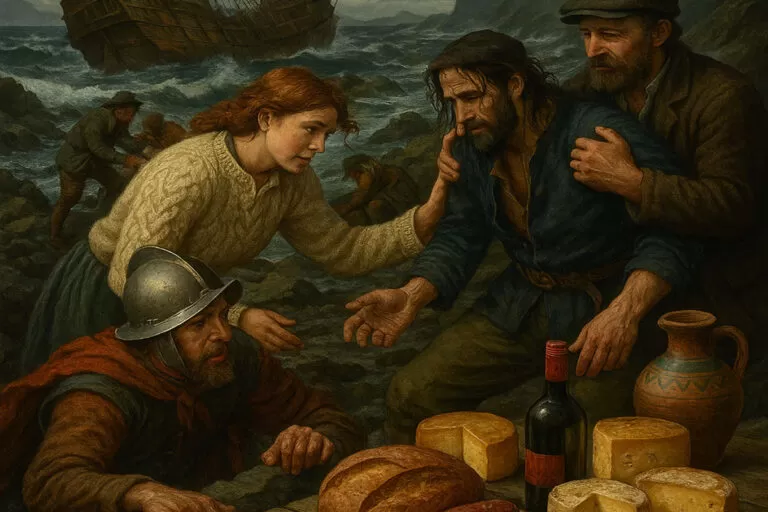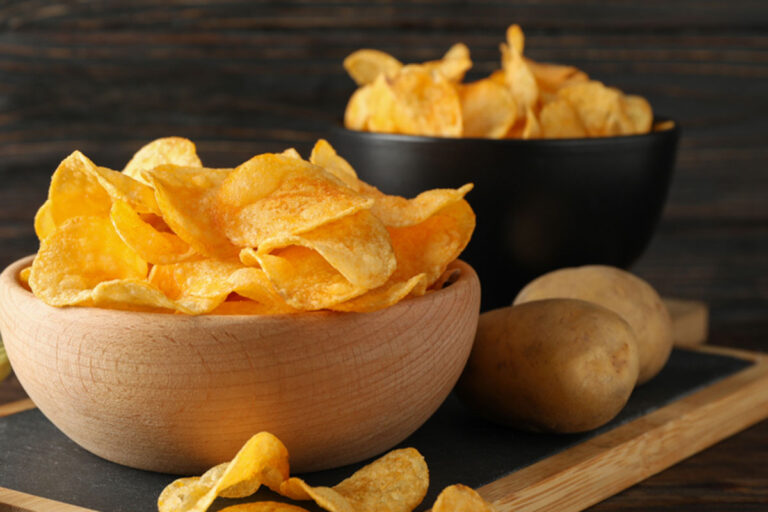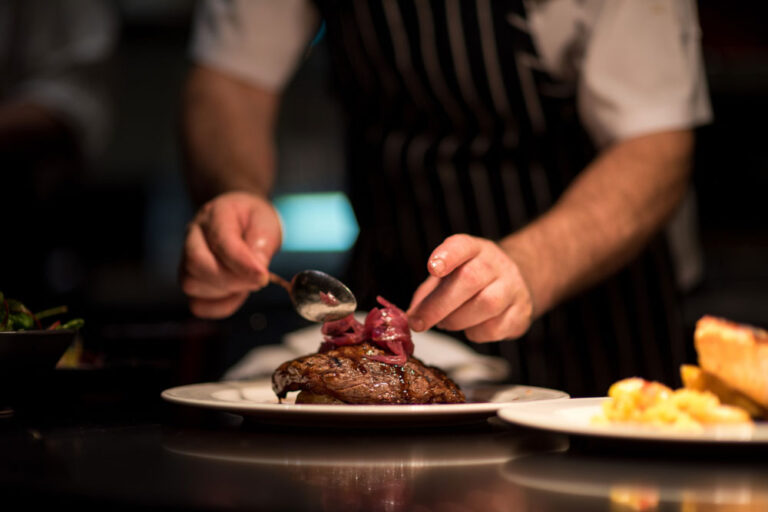The Origins of Colcannon and Champ
Colcannon and champ are two iconic dishes from Irish cuisine, known for their simplicity and deep ties to the culture and history of Ireland. While they share common elements—potatoes, dairy, and a humble preparation—each has a distinct identity rooted in the Irish way of life.
The History of Colcannon
The word “colcannon” is derived from the Gaelic phrase cál ceannann, which translates to “white-headed cabbage.” This reflects its main ingredients: mashed potatoes and cabbage (or kale). Colcannon dates back centuries and became a staple during Ireland’s agrarian era when hearty, inexpensive meals were essential for survival. Cabbage and kale, hardy crops, paired with potatoes, formed a nourishing dish that kept Irish families fed through harsh winters.
The History of Champ
Champ, on the other hand, originates from the Ulster region and is slightly less complex than colcannon. Its name comes from the English word “chomp,” reflecting the satisfying nature of this dish. Traditionally, champ features creamy mashed potatoes blended with chopped scallions (spring onions) and butter. It was an everyday meal for rural families who grew their own potatoes and kept dairy cows, ensuring a constant supply of milk and butter.
Shared Cultural Significance
Both colcannon and champ were not just food but symbols of sustenance and community. They were often served at large family meals or during celebrations, underscoring the importance of food as a shared experience. While the recipes are simple, their cultural weight is profound, representing resilience and resourcefulness in Irish history.
Key Ingredients and Regional Variations
Colcannon and champ may seem straightforward at first glance, but their ingredients and preparation reflect Ireland’s agricultural landscape, regional preferences, and local traditions. Each dish celebrates the bounty of the land, with slight variations depending on where it’s made.
The Essentials of Colcannon
At its core, colcannon consists of mashed potatoes, butter, milk or cream, and either cabbage or kale. The choice between cabbage and kale often depends on what’s locally available. Kale, being more resilient to Ireland’s cool climate, was historically more common in rural areas, while cabbage might have been preferred in regions with slightly milder conditions.
To make colcannon, the vegetables are finely chopped and sautéed until tender, then folded into the mashed potatoes. Some recipes add leeks or onions for extra flavor, and occasionally, a hint of nutmeg or parsley elevates the dish.
The Simplicity of Champ
Champ relies on fewer ingredients but delivers equally satisfying flavors. The signature component is scallions (spring onions), finely chopped and steeped in hot milk or cream to infuse their mild onion flavor. This mixture is then blended into smooth mashed potatoes, along with butter and salt. The key to champ lies in its creaminess, often achieved with generous amounts of butter.
Regional Twists
Ireland’s counties put their own spin on colcannon and champ. For example:
- Kerry: Colcannon here might feature an abundance of kale, known locally as “curly cabbage,” and is often served as a festive dish.
- Ulster: In Northern Ireland, champ remains a staple, often served as a side dish with sausages or bacon. Some variations might use wild garlic instead of scallions, depending on the season.
- Connacht: In the west, butter-heavy recipes prevail, with locals prizing the creamy richness of their dairy.
Local Influence on Ingredients
The flavor of these dishes is also shaped by the quality of local produce. Irish potatoes, known for their fluffy texture, are ideal for mashing. The lush pastures of Ireland’s countryside contribute to the high quality of butter and cream, lending both dishes their signature richness.
Folklore and Traditions Surrounding Colcannon and Champ
Colcannon and champ are not just beloved dishes in Ireland; they are steeped in tradition and folklore that reveal their significance beyond the dinner table. These meals carry echoes of old customs and superstitions, tying them to Ireland’s rich cultural tapestry.
Colcannon and Halloween
Colcannon is particularly associated with Halloween, or Samhain, the ancient Celtic festival marking the end of harvest season. It was customary to hide small objects within the dish, each carrying a symbolic meaning for the person who found it in their serving. For instance:
- Ring: A sign of impending marriage.
- Thimble: A prediction of spinsterhood.
- Coin: A harbinger of wealth.
- Button: Indicated bachelorhood.
These tokens added an element of fun and fortune-telling to the meal, making colcannon an integral part of the Halloween celebration.
Champ as a Community Dish
In rural Ireland, champ was often prepared in large quantities to share with neighbors or family during gatherings. A particularly heartwarming tradition involved leaving a portion of champ, with a pat of butter melting in the center, on the doorstep for the fairies. This offering was believed to bring good luck and ensure protection for the household.
Superstitions About Ingredients
Both dishes reflect Ireland’s connection to the land and its superstitions about food. For instance:
- It was considered bad luck to prepare colcannon or champ without properly blessing the potatoes or butter, a practice linked to gratitude for the harvest.
- In some regions, cooking colcannon with kale was thought to ward off evil spirits, as kale was believed to have protective properties.
The Role of Butter and Dairy
Butter plays a near-sacred role in Irish cuisine and culture. A pat of butter placed in the center of champ or colcannon was not only a culinary choice but also a symbolic one, representing abundance and good fortune. Many families believed that leaving even a drop of milk or butter uneaten was wasteful and could anger the spirits.
Modern Echoes of Tradition
Though these customs have faded over time, some households still honor the old ways, especially during Halloween or festive occasions. The traditions surrounding colcannon and champ remind us that food is more than sustenance—it’s a vessel for storytelling, community, and connection to the past.
CHAMP-STYLE POTATO STUFFING
Description: This mouthwatering stuffing draws inspiration from the beloved Irish...
Read MoreCOLCANNON INSPIRED POTATO STUFFING
Description: This delightful stuffing puts a creative spin on the...
Read MoreCOLCANNON CROQUETTES
Description: Colcannon Croquettes are a delightful twist on the traditional...
Read MoreIRISH STEAK WITH CHAMP AND WHISKEY SAUCE
Description: This recipe features tender steak cooked to perfection and...
Read MoreHow Colcannon and Champ Traveled the World
Irish emigration has played a significant role in spreading traditional dishes like colcannon and champ across the globe. As Irish people carried their customs to new lands, these simple yet hearty dishes evolved, influenced by the ingredients and tastes of their adopted homes.
Irish Immigration and the Diaspora
The Great Famine of the mid-19th century forced millions of Irish people to emigrate, particularly to North America, Australia, and the United Kingdom. They brought with them their culinary traditions, including their love for potatoes, butter, and hearty, comforting meals like colcannon and champ.
In these new environments, the dishes adapted to reflect available ingredients and local food cultures. For example:
- In the United States, Irish immigrants often substituted local greens like collard greens or spinach for kale in colcannon, creating a fusion of Irish and Southern cuisine.
- In Canada, champ became a popular side dish at family gatherings, particularly in regions with strong Irish heritage like Newfoundland.
- In Australia, colcannon occasionally features native vegetables like silverbeet (Swiss chard) in place of cabbage or kale.
A Global Influence
As Irish culture gained international popularity, so too did its food. By the 20th century, colcannon and champ began appearing in cookbooks and on restaurant menus outside Ireland. Today, they are often served as part of Irish-themed celebrations like St. Patrick’s Day, symbolizing Irish identity and culinary heritage.
Modern Twists on the Classics
Chefs around the world have reimagined colcannon and champ, using creative ingredients and techniques:
- Fusion Dishes: In contemporary kitchens, colcannon may include additions like bacon, garlic, or caramelized onions for extra flavor.
- Vegan Variations: With plant-based diets gaining traction, some cooks replace butter and cream with olive oil or plant-based alternatives, bringing colcannon and champ to a broader audience.
- Upscale Interpretations: High-end restaurants may serve these humble dishes alongside gourmet proteins like duck or seared scallops, elevating their status from simple sides to sophisticated fare.
A Symbol of Comfort and Connection
Even as colcannon and champ have evolved in different countries, they retain their identity as comfort foods. For Irish immigrants and their descendants, preparing these dishes can be a way to reconnect with their heritage and pass on traditions to future generations.
Colcannon and Champ in Modern Irish Culture
Colcannon and champ have transcended their humble origins to become enduring symbols of Irish heritage, celebrated not only as comfort food but also as cultural touchstones. Their simplicity, versatility, and ties to history ensure their place in both Irish kitchens and broader culinary conversations.
A Culinary Connection to the Past
In an era of fast food and modern conveniences, dishes like colcannon and champ offer a link to Ireland’s agrarian roots. Preparing these dishes today is a form of culinary storytelling—each ingredient and method speaks of the resilience and resourcefulness of Irish ancestors. Whether it’s the buttery richness of champ or the earthy flavor of kale in colcannon, these meals evoke a sense of nostalgia for simpler times.
A Staple at Irish Celebrations
While these dishes were once everyday fare, they now often appear during special occasions. Colcannon is a quintessential part of Halloween (Samhain) feasts, while champ frequently accompanies celebratory meals or seasonal gatherings. St. Patrick’s Day, in particular, has become a global showcase for Irish cuisine, and colcannon and champ take center stage as quintessential Irish sides.
Reinventing Tradition
Modern Irish chefs and home cooks continue to reinvent colcannon and champ, blending tradition with innovation:
- Healthy Alternatives: Some cooks use sweet potatoes, olive oil, or even mashed cauliflower in place of traditional ingredients, creating lighter versions of the classics.
- Artisan Ingredients: High-quality local butter, heirloom potatoes, or organic greens are now common upgrades, reflecting Ireland’s emphasis on sustainable, farm-to-table practices.
- Gourmet Applications: Colcannon and champ now appear in unexpected ways, such as fillings for savory pastries or bases for creative appetizers in fine-dining establishments.
Cultural Ambassadors
Colcannon and champ continue to serve as ambassadors for Irish culture. Cookbooks, cooking shows, and international Irish festivals frequently highlight these dishes, ensuring their traditions are shared with audiences worldwide. For members of the Irish diaspora, making colcannon or champ is a way to stay connected to their roots, even thousands of miles away from the Emerald Isle.
Passing the Torch
The beauty of colcannon and champ lies in their adaptability and accessibility, making them easy to pass down through generations. Many families still teach children the art of making these dishes, ensuring that their rich cultural heritage remains alive. As Ireland’s food landscape evolves, these beloved staples remind people of their shared history and the power of food to preserve identity.
Colcannon and champ may be simple in ingredients, but they are rich in meaning—a testament to the enduring spirit of Irish cuisine and culture.




